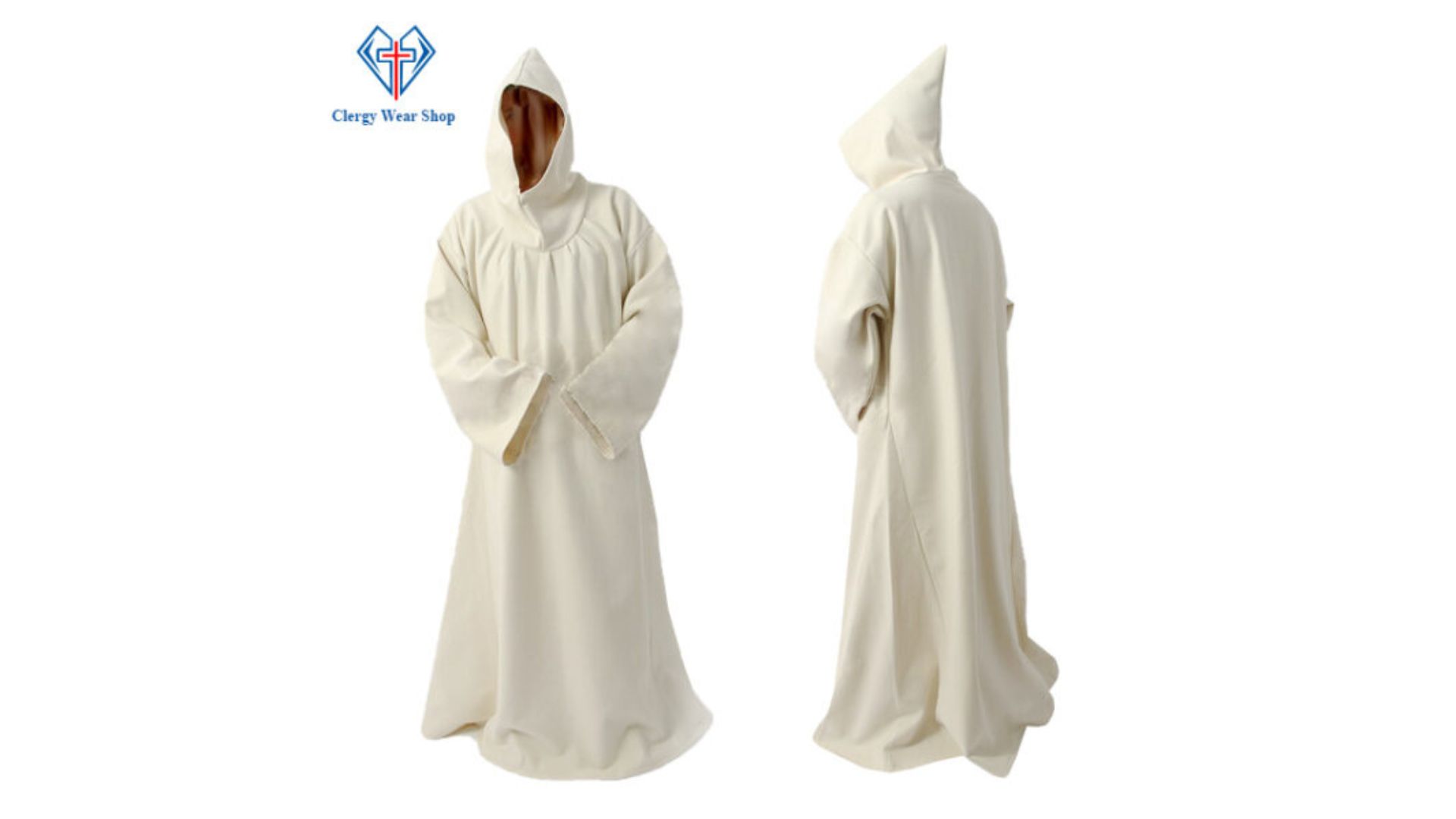How the Monastic Habit Reflects a Life of Humility and Faith

Strong 8k brings an ultra-HD IPTV experience to your living room and your pocket.
The monastic habit holds profound symbolic value. Each part of the garment tells a story—from the rope belt symbolizing obedience, to the cowl representing a life of solitude and focus. It’s a uniform of purpose, commitment, and spiritual transformation. Those who wear the monk’s robe aren’t just cloaked in fabric—they’re enveloped in centuries of monastic tradition and sacred vows taken before God and community.
Fabric of Faith
Many monks prefer raw cotton for their habits because it's unbleached, organic, and closest to the earth—just like their lifestyle. It’s breathable, durable, and carries the humble charm that aligns with a monastic existence. Raw cotton also symbolizes purity and simplicity, serving as a physical reflection of the monk’s inner life. Choosing such natural materials keeps their wardrobe in tune with their sacred values and the environment.
The Making of a Monk’s Habit
Crafting a monk’s habit isn’t just tailoring—it’s a spiritual process. Each stitch carries intention, and every fold honors tradition. The habit typically consists of a tunic, scapular, cowl, and belt, designed with practicality and modesty in mind. These garments are not influenced by fashion trends, but by centuries-old customs rooted in spiritual devotion. The making of a habit is often overseen by skilled artisans who understand its religious importance.
Historical Roots of the Monk’s Habit
The origins of the monk’s habit date back to early Christian monasticism in the 3rd and 4th centuries. Desert Fathers and Mothers in Egypt wore simple garments that symbolized poverty and devotion. Over time, religious orders developed their own distinct styles and colors to reflect their values and rules. Yet, despite visual differences, all monk habits shared a common thread: a visible commitment to the path of spiritual awakening.
Brown Robes and Humility
The brown habit, often associated with Franciscan monks, represents humility and a deep connection to the earth. It reminds the wearer to walk barefoot in spirit and remain grounded in service to others. Brown was chosen because it was cheap and common—aligning perfectly with the Franciscan mission to live among the poor. Today, brown robes continue to speak to the heart of those who seek to live a life of gentle, grounded faith.
Daily Life in the Habit
For monks, wearing the habit is a daily ritual. It’s put on with prayer and reverence, often accompanied by a spiritual reflection. The habit is not changed frequently, symbolizing detachment from vanity. Even in labor, prayer, or study, the habit stays on, reminding the monk of his vows and purpose. It becomes a sacred shield, protecting him from worldly distractions and anchoring him in his divine vocation.
Monk in Habit
A monk in habit doesn’t need to speak loudly to preach. His appearance alone is a sermon—quiet, powerful, and deeply moving. People often feel calm or inspired just by seeing a monk walk by in his habit. That visual testimony can stir something within even the busiest passerby. It’s a reminder that peace, simplicity, and spiritual depth are possible—even in today’s chaotic world.
Modern Uses of the Monk Habit
Today, monk habits are worn not only in monasteries but also in retreats, meditation centers, and even theatrical productions. They serve as powerful visual tools in storytelling, spiritual events, and personal practice. While their spiritual essence remains intact, their presence in various settings highlights the enduring influence of monastic life. Even outside the abbey, the habit carries a deep message of stillness and sacred intention.
Monk Habit Misconceptions
Some people mistakenly think monk habits are costumes or outdated relics. But they’re very much alive and relevant today. They’re not theatrical garb—they are living garments that speak of spiritual commitment. Wearing a habit doesn’t make one holy, but it marks a person on a specific path of transformation. Understanding and respecting the habit’s history and purpose is essential when encountering or wearing one.
Why the Monk in Habit Still Inspires
Despite living in a fast-paced, materialistic world, the monk in habit continues to inspire people across cultures. Why? Because the monk represents what many crave—peace, clarity, and connection with something greater. The habit is not flashy or luxurious, but it shines with spiritual purpose. In a world chasing trends, the monk in habit quietly teaches us the beauty of stillness, prayer, and the freedom found in simplicity.
Where You Can Buy a Monk's Habit
If you’re seeking a traditional, high-quality monk habit made with raw cotton and spiritual integrity, look no further than Clergywearshop. Our store specializes in monastic and clerical garments, hand-crafted with care and attention to sacred tradition. Whether you’re a religious brother, spiritual practitioner, or simply someone who appreciates authentic garments with meaning, Clergywearshop offers durable, ethically-made robes that honor your faith journey. We ship worldwide and serve with dedication and respect.
Conclusion
The monk in habit is a timeless figure—a symbol of dedication, discipline, and divine love. The habit is not merely clothing; it is a visual and spiritual declaration of a life lived for others and for God. Whether you’re called to wear one or simply admire the sacred symbolism, the monk’s habit reminds us of the deeper paths available in life. In every thread is a story of faith that still speaks to the soul.
Note: IndiBlogHub features both user-submitted and editorial content. We do not verify third-party contributions. Read our Disclaimer and Privacy Policyfor details.



